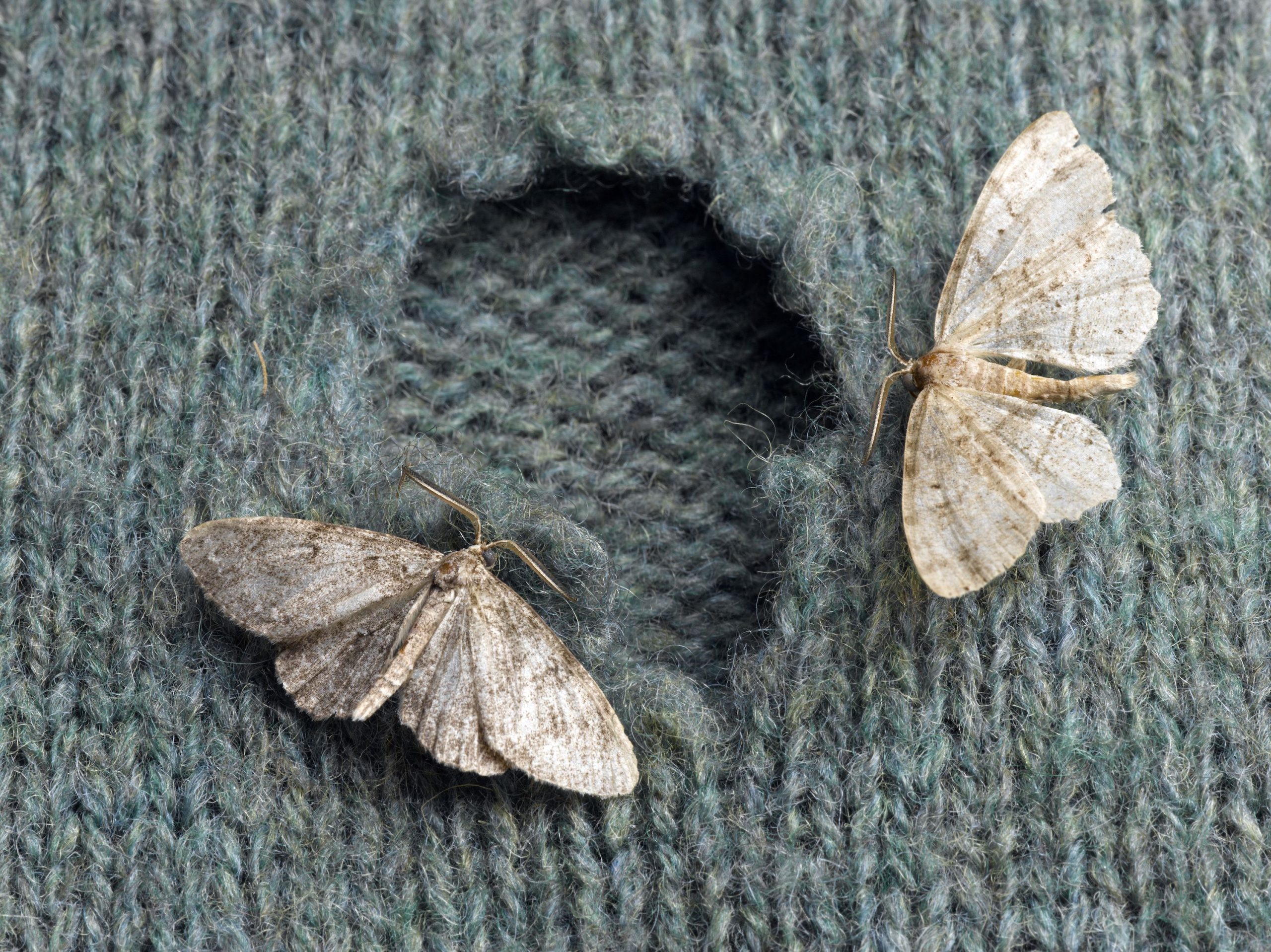
Throughout the summer, largely hidden from human eyes, an epidemic has been raging whose casualties are only now becoming clear. I’m talking, of course, about London’s clothes moth plague.

As the nights begin to draw in, so too do the cashmere scarves around our necks. Largely neglected and stashed away during the warmer months, you may have noticed some of these seem to have fallen prey to tiny, ectoplasmic vandalisms. This is the cruel work of two beasts: the common clothes moth or the case-bearing clothes moth.
Between 2012 and 2016, English Heritage noted a 216% increase in the number of these dusty little sadists munching their way through its properties. In London, over the same period, I noticed a 2,016% increase.
My obsession with clothes moths began in the early summer of 2015. I’d just returned from spending a month with my uncle in New York City. While I’d been away, the Tories had won a majority for the first time since I was a wee bairn. Despite this setback, I was upbeat. A month in the Big Apple will do that to an Englander.
ArrayI skipped through the front door of my mum’s house, where I was living at the time, with a suitcase full of crap and a head full of short-term memory loss. Later that evening, I asked the old dear what she’d been up to while I was away. Oh, nothing much, but her and her friend Emma had spent a whole weekend getting rid of a moth infestation in the attic.
A what!? Before the last syllable had left my incredulous gob, I was up the stairs, wrenching open my drawers. It was a massacre. A carefully cultivated knitwear portfolio reduced to moulting ignominy. Cashmere—once I held mountains in the palms of my hands. Dear reader, I threw it all away.
Look, I know it’s not that big a deal. Plenty of people have to start over. But I had some real recherche pieces in my collection: cobalt blue Pringle lambswool, cashmere polo shirts, ecru submariner turtlenecks. All gone.

It took a while for me to tell the full story. Even longer for me to come to terms with what had happened. For a hot second, I considered becoming a pest exterminator, specialising in clothes moths. I imagined an old lady coming into my firm’s office, telling the receptionist she had a problem, a silent finger pointing her towards the back of the building where I sat: bandana on, cigarillo in mouth, thousand yard-stare.
But then I thought, nah. Instead I made a promise to myself never to contract clothes moths ever again. I soon found out that in London, and especially its north western corner, this is a resolution that requires near-constant vigilance.
After I flew the nest of broken threads, I settled in East London for a couple of years. Over there, the moth problem didn’t seem too bad. I even stored my re-burgeoning wool collection in drawers and on shelves, rather than in bags and vacuum-packed sacks.

Two years later, I returned to the mild west, where hostilities resumed. I spoke to friends, relatives and wise dry-cleaning staff about why the moth problem in the Kensal Rise-Ladbroke Grove-Acton tri-state area was so bad.
Some said it was due to its balmy microclimate and the prevalence of hills (moths like to be close to the moon, apparently). Others said it was due to the area’s proximity to the garment factories of Shepherds Bush and Hounslow, many of which are owned by South Asians: a virulent clothes moth species was rumoured to be imported from India in silk and wool.
I like to think it’s due to the large quantities of cashmere found in the wardrobes of the well-heeled. This time, once I realised I had a problem, I acted with haste.
moths like to be close to the moon, apparently
The arsenal available to the amateur exterminator is vast and sophisticated. There are smoke bombs, pheromone tags you can hang on your railings, noxious chemicals whose names look like Google-suggested passwords. And, of course, there’s the classic lavender pouches and cedarwood balls.
All of these are designed to fight full grown moths not their larvae, which are the real pests. Moth larvae can take up to three months to develop into adults. During this time, they gorge on fibres derived from animal hides: wool, silk, fur and feathers. In the wild, they eat these same things but usually off the bodies of dead animals, apparently.
There are a few reasons why clothes moth populations are growing in this country: warmer weather prolongs their breeding season, the popularity of natural fibres in domestic décor and insulation is giving them more to munch on (as is our fast fashion culture which means that often our houses are filled with unworn clothes), and a decline in regular cleaning is allowing their infestations to grow undisturbed.

Illuminated Copper-engraving from Metamorphosis insectorum Surinamensium, Plate XLVIII. 1705
If you really want to eradicate a moth problem, you have to target the larvae. Hoover the insides of drawers and the edges of carpets. Moths hate to be disturbed so the more you wear something the less likely it is to be chomped. If you fear a garment or rug is infested, put it in the freezer for a few days. Moth eggs thrive at room temperature but die in the cold or hot (over 55°).
Perhaps most importantly: buy less clothes. I realise now that a large part of my problem was due to the vast cache of threads I stored in my mum’s house. I didn’t want to give them away because I thought they had sentimental value. In the end, they went straight in the bin.
Mine is a cautionary tale, tinged with grief… I saw the best scarves of my generation destroyed by neglect. Think of the cashmere. Protect ya neck.




